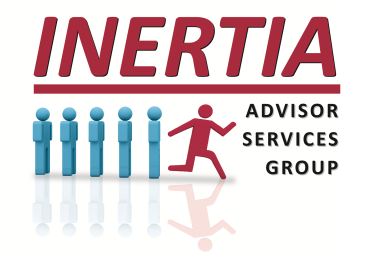Turn Taxable Dollars Into Tax-Free Benefits
During times of market turbulence and uncertainty, you and your clients may likely be reviewing various retirement account statements.....But make no mistake, you’re not the only one paying attention!! The IRS is eagerly waiting for Americans to start accessing and spending their retirement dollars so those tax dollars begin rolling in!!
According to recent statistics, Americans have more than $30 TRILLION in retirement assets, and according to the Insurance Information Institute, that includes more than $3 TRILLION of assets in annuities. Everyone wants to see their retirement accounts grow, and you can imagine the excitement of the IRS as they look to get a piece too.
While it’s challenging, if not impossible, to avoid paying taxes on distributions from retirement accounts and annuities, there are strategies to consider that may make the impending tax bill a bit more palatable. This is especially true with Long-Term Care (LTC) planning, as there are various ways you can effectively turn taxable dollars into tax-free benefits. Before we get to that topic, let’s look at two primary issues concerning retirement accounts and annuities.
Uncle Sam Loves Your Clients' Retirement Accounts...
When retirees begin taking distributions from their retirement accounts, those distributions will be fully taxable. As retirees begin to understand this better, some try to delay taking distributions from retirement accounts; but this tactic only delays the inevitable. Because like it or not, at age 73, the government requires retirement accounts to begin being tapped through Required Minimum Distributions (RMDs).
Without some prudent planning, a retiree’s tax bill can actually go up during retirement. There’s another reason Uncle Sam loves retirement accounts – Your clients are human, and the clock is ticking! There are significant tax implications for retirement accounts passed on to non-spousal beneficiaries, and last year's SECURE Act makes it even more of a challenge. While every situation is unique and your clients should get personalized guidance from a tax professional or CPA, generally speaking, the IRS is going to their cut one way or another.
The Reality of Tax-Deferred Annuities...
Savings or accounts funded with already taxed dollars are referred to as “non-qualified” dollars. Many people use a portion of those non-qualified dollars to create supplemental retirement income to augment Social Security benefits and retirement account distributions. In a country with nearly $2 Trillion in non-qualified annuities, it’s clear that consumers find the tax-deferral feature of these solutions appealing. However, surveys consistently indicate that most “non-qualified” annuities will not be tapped for income needs and will continue to grow until the owner of the annuity passes away.
What happens then? The beneficiary listed on the account receives the annuity proceeds, along with a 1099 some months later to include when they prepare their taxes.
The Tax Benefits of Long-Term Care Planning.....
Although there are numerous variables, those willing to take the time will find various planning options. Perhaps the best feature of LTC Planning is that most of today's solutions provide TAX-FREE benefits to pay for care. Here are two scenarios we frequently recommend advisors consider for their clients……
#1 - Utilize Retirement Asset for LTC Planning
When advisors and their clients discuss LTC planning and funding the potential solutions, we encourage them to focus on low-yield deposits or retirement accounts not currently used to generate income. Especially for those approaching 72 and about to begin taking RMDs. Taxes would be paid annually on distributions to fund the LTC plan, just as would be the case with any RMDs, but the potential LTC or life insurance benefit is the critical component. If LTC is needed, there would be a TAX-FREE benefit stream to utilize.....if Long-Term Care is not required, the life insurance benefit will pass to the heirs TAX-FREE. Effectively, this solution helps turn taxable dollars into TAX-FREE dollars for the beneficiaries or future LTC expenses.
#2 - Upgrade Old Annuities To Maximize Benefits
Another scenario involves clients who own old annuities.....Imagine a client who owns an annuity now valued at approximately $200,000, and they aren't using the annuity to generate income. When pressed on the topic, the original use of the annuity is to pay for future healthcare expenses or provide a legacy benefit. Initially, the client invested approximately $100,000 (basis) into the annuity, which means there are about $100,000 in gains. If your client withdraws funds from that annuity to pay for LTC expenses, that will result in taxable income in the year it is taken. That cycle would continue annually until all of the gains are taxed.
However, by taking advantage of the tax code – specifically the Pension Protection Act (PPA) of 2006 – it's possible to “upgrade” the annuity to a PPA-compliant solution. Moving the $200,000 to a new PPA Compliant annuity could triple the available funds for LTC to $600,000, AND the new annuity would eliminate the taxes on any withdrawals for qualified LTC expenses. Effectively, this solution turns taxable dollars into TAX-FREE benefits and creates your client's LTC plan with ZERO out-of-pocket expenses!!
As you review your clients' retirement accounts and annuities, consider the tax implications of using those funds one day and how repositioning those dollars for Long-Term Care Planning might be an excellent option!!
230913

